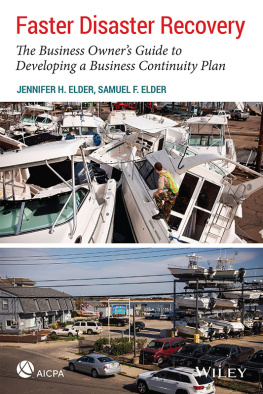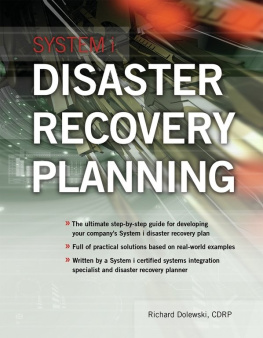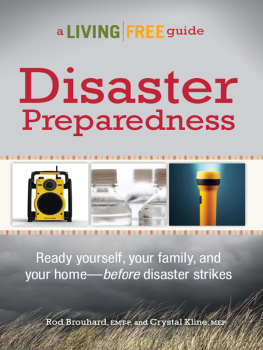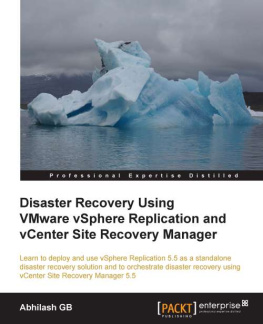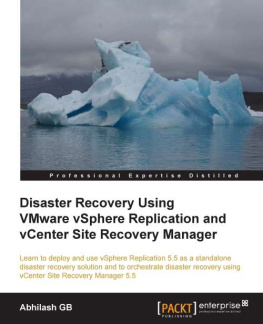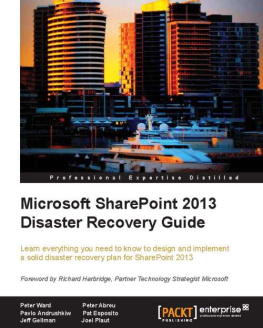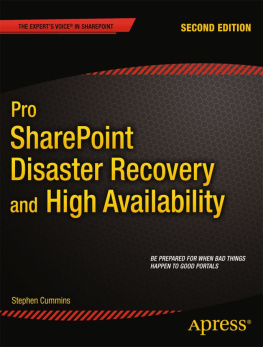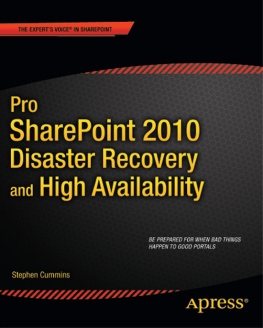Thank you for downloading this AMACOM eBook.
Sign up for our newsletter, AMACOM BookAlert , and
receive special offers, access to free samples, and
info on the latest new releases from AMACOM,
the book publishing division of
American Management Association.
To sign up, visit our website: www.amacombooks.org
To learn more about the American Management
Association visit: www.amanet.org

The copyright information for this title may be found at the end of this eBook file.
THE
DISASTER RECOVERY
HANDBOOK
| THIRD EDITION |
THIRD EDITION
THE
DISASTER RECOVERY
HANDBOOK
A Step-by-Step Plan to Ensure Business Continuity and Protect Vital Operations, Facilities, and Assets
MICHAEL WALLACE
LAWRENCE WEBBER

CONTENTS




 by Dennis N.T. Perkins with Margaret P. Holtman and Jillian B. Murphy
by Dennis N.T. Perkins with Margaret P. Holtman and Jillian B. Murphy

PDF files for the supplementary materials are available to purchasers of this book at: www.amacombooks.org/go/DisasterRecovery3E.
SUPPLEMENTARY MATERIALS
www.amacombooks.org/go/DisasterRecovery3E
Form 1-1: Example Letter Appointing the Business Continuity Manager
Form 1-2: Stakeholder Assessment Map
Form 1-3: Team Member Responsibilities Map
Form 1-4: Communications Responsibility Plan
Form 1-5: Sample Stakeholder Reporting Matrix
Form 2-1: Department Function Identification
Form 2-2: Business Impact Analysis Questionnaire
Form 3-1: Layer One Risk Assessment Tool
Form 3-2: Layer Two Risk Assessment Tool
Form 3-3: Critical Process Impact Matrix
Form 3-4: Critical Process Breakdown Matrix
Form 3-5: Risk Assessment Form Layer 3
Form 3-6: Risk Assessment Form Layer 4
Form 3-7: Risk Assessment Form Layer 5
Form 5-1: List of Service Agreements
Form 5-2: Vendor List
Form 5-3: Emergency Contact List
Form 5-4: Vendor Matrix
Form 5-5: Emergency Equipment List
Form 6-1: Sample Business Continuity Action Plan
Form 3-3: Critical Process Impact Matrix
Form 3-4: Critical Process Breakdown Matrix
Form 7-1: Sample Administrative Plan
Form 7-2: Business Continuity Manager Job Description
Form 8-1: Technical Recovery Plan
Form 8-2: IT Team Leader Recovery Plan
Form 8-3: Technician Tracking Log
Form 8-4: Recovery Activity Log
Form 8-5: Hour-by-Hour Recovery Plan
Form 9-1: Sample Work Area Recovery Plan
Form 10-1: Sample Pandemic Management Plan
Form 11-1: Sample Crisis Management Plan
Form 11-2: Skill Matrix by Technical Skill
Form 11-3: Skill Matrix by Job Process
Form 11-4: Skill Matrix by Job Function
Form 13-1: Log Sheet
Form 13-2: Observation Log
Form 18-1: Shelf List
Form 18-2: Recommended Supplies List
Form 19-1: Sample Incident Management Plan
Form 20-1: Recovery Plan Distribution List
Form 20-2: Recovery Plan Change Record
Form 22-1: Inventory of Key Customers
Form 23-1: Supplier Data
Form 24-1: Sample Fire Poster
Form 25-1: Skill Matrix by Job Process
Form 25-2: Skill Matrix by Technical Skill
Form 25-3: Skill Matrix by Job Function
ACKNOWLEDGMENTS
The authors would like to express their appreciation to Matt Curtin of Interhack, Michael James of Fireproof Records Center, and Alice Kaltenmark of Reed Elsevier for sharing their experiences in business continuity. Their wisdom and insights were extremely valuable in creating this updated edition.
We would also like to express our appreciation to our wives Tami and Nancy for their support while developing this and other books. Any successes that weve had would not have been possible without their support.
GETTING STARTED
Overview of the Project
Nothing is impossible for the man who doesnt have to do it himself.
A. H. WEILER
INTRODUCTION
The job of a business executive requires coordination of the many activities necessary to create a successful business. Markets must be analyzed, potential customers identified, strategies for creating and delivering products and services must be developed, financial goals established and reported, legislative mandates followed, and many different stakeholders satisfied. To ensure that these objectives are met, businesses eventually develop a series of processes designed to produce the desired result. But the world is a dangerous place. Earthquakes, floods, tornadoes, pandemics, snowstorms, fire, and other natural disasters can strike at any time and interrupt these important processes. Terrorism, riots, arson, sabotage, and other human-created disasters can also damage your business. Accidents and equipment failures are guaranteed to happen. As an executive responsible for the well-being of your organization, it is critical that you have a plan in place to ensure that your business can continue its operations after such a disaster and to protect vital operations, facilities, and assets.
You do this just like you do any other important task; you analyze the situation and create a plan. A disaster recovery plan keeps you in business after a disaster by helping to minimize the damage and allowing your organization to recover as quickly as possible. While you cant prevent every disaster, you can with proper planning mitigate the damage and get back to work quickly and efficiently. The key is having a well-thought-out and up-to-date disaster recovery plan. This chapter will lead you through the creation and implementation of a project plan for creating an effective disaster recovery plan.
Disaster recovery is to recover from a significant disaster, such as a roof collapse in the computer room or a fire in a significant portion of the offices. A disaster almost always requires rebuilding a portion of the business in a recovery area in a very short time. Business continuity, also known as business resilience, involves identifying and mitigating critical machines that may fail. For example, a failure of the database server may close down online customer orders, so a second server is clustered and the disk storage is mirrored to provide redundancy.
THE DISASTER RECOVERY PLAN PROJECT
Building a disaster recovery or business continuity plan is much like any other business project. A formal project management process is necessary to coordinate the various players and company disciplines required to successfully deliver the desired results of the project. This chapter will give you a high-level roadmap of what you should expect as you prepare to lead or manage a disaster recovery project. A sample project plan is included in the companion url accompanying this book. Adapt this chapter and the project plan to fit your business goals, company timeline, and scope of project.
Next page

